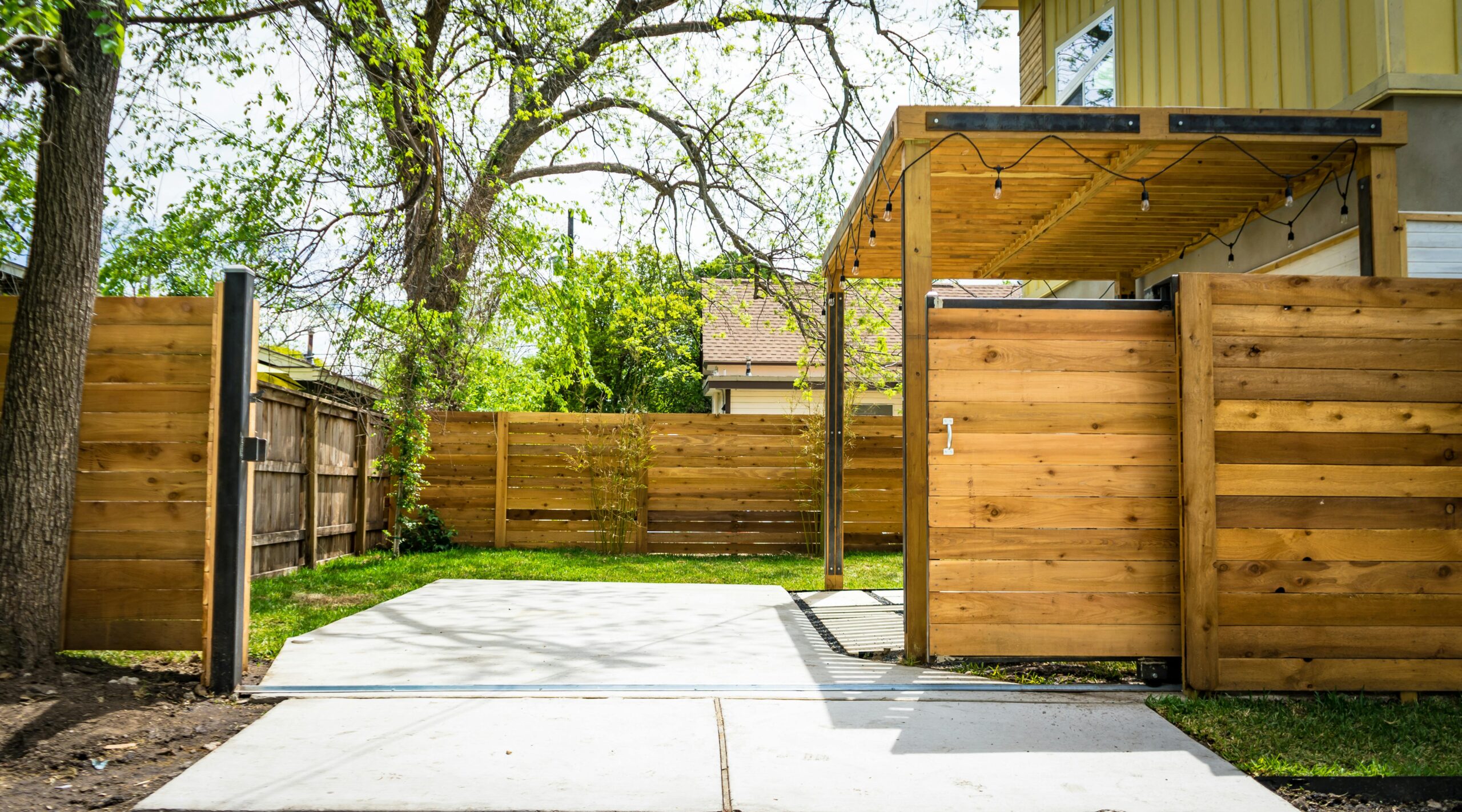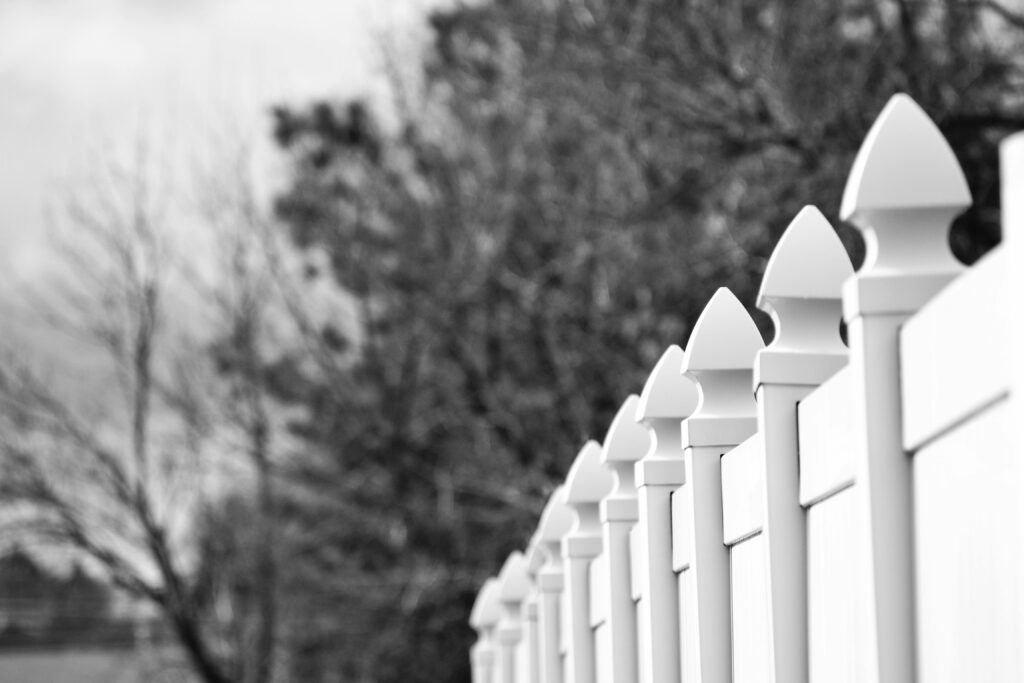A fence is more than just a boundary, it’s a key element of your home’s privacy, security, and curb appeal. Whether you’re trying to keep pets safe, create a private outdoor space, or simply add a decorative touch, installing a fence requires careful planning. Before diving into a new fencing project, it’s important to understand what’s involved to avoid unnecessary costs, delays, or disputes. Here’s what every homeowner should know before installing a fence.
Know Your Goals
Before you begin any project, get clear on why you want to install a fence. Different goals require different fence styles and materials:
- Privacy: Tall wood or vinyl fences with little to no spacing between panels.
- Security: Metal or chain-link fences with lockable gates.
- Curb Appeal: Decorative aluminum or split-rail fences.
- Pet or Child Containment: Functional fences at a height and design suited to safety needs.
By identifying your priorities early, you can choose a solution that meets both form and function.
Understand Local Zoning and HOA Regulations
One of the most common and costly mistakes homeowners make during fencing projects is ignoring local codes and homeowner association (HOA) guidelines. Before moving forward with installation, it’s essential to understand requirements such as property line setbacks, maximum fence height, and any necessary permits. For those in HOA-regulated communities, there may also be rules about acceptable materials, colors, or styles.
Installing a fence without the proper approvals can result in fines, mandatory removal, or even legal disputes with neighbors. To avoid these issues, it’s wise to consult your local zoning office or HOA board in advance. Taking the time to do this upfront can save you significant hassle and expense down the line.
Survey Your Property
Speaking of boundaries, one common error that can lead to costly consequences is failing to confirm property lines. A current land survey can help establish accurate borders and avoid encroaching on a neighbor’s property. Even if a homeowner believes they know where their yard ends, relying on informal markers like fences or hedges can be misleading. If a survey hasn’t been done recently—or ever—it’s often wise to hire a licensed surveyor before installing a fence.
Choose the Right Material for Your Needs

The fence material you choose impacts the fence’s look, durability, and maintenance. Here are some common options:
- Wood: Classic and versatile but requires regular staining or sealing.
- Vinyl: Low-maintenance and weather-resistant; available in many styles.
- Aluminum: Lightweight, rust-resistant, and elegant for ornamental designs.
- Chain-Link: Budget-friendly and secure, but not ideal for privacy.
- Composite: Combines wood’s aesthetics with vinyl’s durability.
Each material comes with its own pros and cons. Think about your climate, lifestyle, and long-term maintenance preferences when deciding.
Consider Maintenance and Longevity
Selecting the right material often comes down to lifestyle and long-term priorities. Some homeowners prefer the rustic appeal of a natural wood fence and are happy to commit to sealing and staining it every few years. Others may prioritize low maintenance and longevity and opt for vinyl or composite. Climate also plays a role—harsh winters, heavy rainfall, and coastal salt air can impact how well certain materials perform over time.
Here are some questions you can ask yourself:
- How much time am I willing to invest in maintenance?
- How long do I want this fence to last?
Prioritizing low-maintenance options might cost more initially, but it could save you time and money in the long run.
Think About Your Neighbors
When planning a fence, it’s easy to focus on materials and appearance, but it’s equally important to consider how your choices might impact your neighbors. A tall privacy fence may give you solitude, but it could also block natural light or obstruct views next door. That’s why communicating your plans early, especially when building along shared property lines, is both courteous and, in some areas, legally required. Open dialogue can prevent disputes, promote goodwill, and even lead to cost-sharing agreements in communities where neighbors commonly split the expense of shared fencing. Taking the time to have these conversations can make the process smoother and more mutually beneficial.
Plan for Gates and Access Points

Planning access is another overlooked aspect of fencing. Gates and entry points are crucial for accessibility and should be strategically placed to ensure easy movement through the yard. Will lawn equipment need to pass through? Will there be guests entering from a driveway or back alley? The width and number of gates should suit the homeowner’s day-to-day needs while preserving both security and convenience.
Ask yourself:
- Where do I need entrances or exits?
- Will I need double gates or custom access for larger items?
Proper gate placement also affects the functionality of your yard and can impact property value.
Understand Installation Timelines and Costs
Fence installation isn’t a one-day job. Timeline and cost can vary based on:
- Fence length and material
- Terrain (sloped, rocky, or uneven areas may take longer)
- Weather delays
- Permit approval timeframes
Even if you’re hiring professionals, factor in at least several days for full project completion, plus time for permits and inspections. Accurate budgeting can prevent unpleasant surprises. Homeowners should also budget for more than just materials—labor, permits, and even post-installation landscaping or repairs should be accounted for. Setting realistic expectations at the outset can help avoid frustration.
Don’t Overlook the Impact on Home Value
Installing a fence can add value to your home, especially if it’s attractive, well-built, and matches the neighborhood’s aesthetics. Fences that offer privacy or security are particularly appealing to buyers with pets or children.
However, a poorly designed or cheaply constructed fence can have the opposite effect. Choose quality materials and ensure proper installation to enhance your property’s appeal.
Decide: DIY or Hire a Pro?
While some homeowners take on fencing as a DIY project, it’s not always the best choice. Professional installers bring several advantages to the table. They have expertise with local building codes and permit requirements, helping you avoid legal or regulatory issues. They also use high-quality tools and materials that may not be readily available to the average homeowner.
Their experience ensures greater efficiency and precision during installation, which often leads to a more durable and visually appealing result. Additionally, many professional services include warranties or service guarantees, giving you peace of mind long after the fence is built.
For those unfamiliar with construction or without proper tools, professional fence installation can save time and ensure safety. Working with a trusted fence specialist ensures peace of mind and long-term value.
Installing a Fence
Installing a fence is a significant investment in your property. With the right planning, materials, and approach, it can transform your yard into a private, safe, and stylish space. By taking the time to understand regulations, materials, and installation best practices, you can avoid common mistakes and ensure the result meets your expectations.
Whether you’re upgrading your backyard, enclosing a garden, or creating a child-friendly play space, the right fence starts with the right information.

